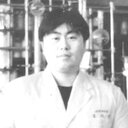Ulmus davidiana Nakai induces apoptosis and autophagy on non-small cell lung cancer cells.
Ključne riječi
Sažetak
BACKGROUND
Ulmus davidiana Nakai (UDN) is frequently used in the treatment of cancer in traditional oriental medicine. Although several reports indicate that UDN has inhibitory effects in some cancers, there has been no report on the inhibitory effects of UDN via both autophagy and apoptosis.
METHODS
Cytotoxicity induced by UDN in human non-small cell lung cancer (NSCLC) H-1299 and H-460 cell lines was evaluated using the 2, 3-Bis (2-methoxy-4-nitro-5-sulfophenyl)-2H-tetrazolium-5-carboxanilide inner salt (XTT) assay and trypan blue exclusion assay. Induction of apoptosis was also investigated using Hoechst staining and annexin-V binding assay and was confirmed with western blot analysis. Induction of autophagy was investigated through observation of autophagy vacuoles under inverted phase-contrast microscopy and was confirmed by observing the formation of autophagy vacuoles under a fluorescence microscope using monodansylcadaverine (MDC) staining and western blot analysis. The in vivo anti-tumorigenic effect of UDN was investigated in an athymic nude mouse xenograft model using H-1299 NSCLC cells.
RESULTS
UDN exhibited a marked inhibitory effect on cell growth in H-1299 and H-460 human NSCLC cell lines in a dose- and time-dependent manner in vitro and in vivo. It induced not only apoptosis, but also autophagy in both H-1299 and H-460 cells in a dose-dependent manner. UDN-mediated autophagy led to the accumulation of autophagosome, resulting in apoptosis induction and cell death.
CONCLUSIONS
From our current knowledge, we are the first to demonstrate that UDN has the potential to induce both autophagy and apoptosis in H-1299 and H-460 human NSCLC cell lines. We suggest that UDN can be considered a potential candidate for lung cancer-specific chemotherapy with efficacy as a cytotoxic agent.


